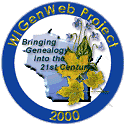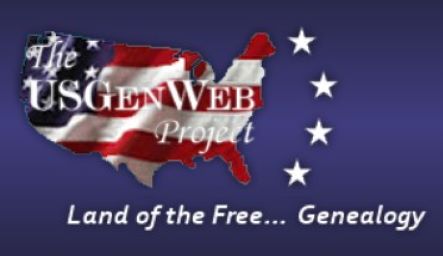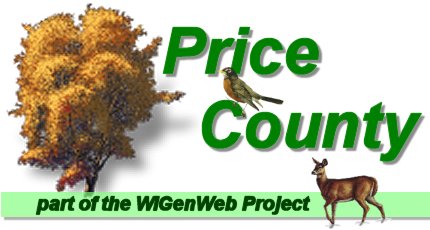|
Excerpts from
the chapter, New Smaller Mills (1910
– 1918):
“In 1914 the Ogema
Telephone Company began constructing a system of telephone lines into Knox
Mills.”
“In 1910 a Knox Mill landmark was built.
It was the Stone
Arch Bridge
on Old Mills Road
that crossed Long Meadow, or Knox Creek. Automobiles were also beginning to
appear.”
“Carl Sandquist
of Brantwood became the owner of a Columbia Grand
Concert Grafanola and a collection of Columbia records and
entertained people from surrounding communities with evenings of music and
dancing. Elmer Carlson, also of Brantwood,
purchased a moving picture machine and traveled to surrounding communities
entertaining crowds with movies. At times, the two, Carl and Elmer, would
combine their amusements. They became popular entertainers in Pre-World War
I. Many of their performances were held at K. O. Knutson’s Hall above his
store in Knox Mills.”
“In 1914 a member of the community
appeared before the Town Board of the Town of Knox and brought it to their attention
that there wasn’t a cemetery in the Town for people who weren’t affiliated
with any church. Since the Norwegian
Lutheran Church
had established a cemetery by the church when it was built they sold their
old cemetery located on West
Knox Road, just north of Old Mill Road to the Town of Knox to be used as
the town cemetery.”
Although the cemetery is still there, all but three of
the tombstones have been vandalized and destroyed. Link: Knox
Mills Cemetery
“By 1914 a growing economy and World War
I increased the demand for wood products. Business at Knox Mills escalated
as the large mills, numerous small jobbers, and area farmers stepped up
their shipment of products along the Soo Line
from Knox Mills.”
By 1916 there were fifty cars a day
being shipped out between January and March. Most of the wood products
shipped out went to Rhinelander and consisted of logs, ties, pulpwood and
bark.”
“A growing economy meant a growing
population, and in 1916 Knox Mills found that when its school house doors
opened for the 1916-17 school year, the school room was too small to meet
the growing demands of the Knox Mills country. That year there were over
eighty children of school age in the district.”
“In 1917 the United States entered World War
I. At their annual town meeting in 1917 the town government passed a
resolution against the war. Copies of the resolution protesting the war
were sent to President Wilson, Senators Husting
and LaFollette and to Congressman J. L. Lemont of
the Town of Knox
congressional district.”
“In June of 1917, Knox Mills boys had to go to Prentice and from there to Worcester to the Hackett Town Hall
in order to register for the draft (this route indicates that they went by
train). Like all other young Americans, they began watching newspapers to
see when they were called to service for their country. Four young men from
Knox Mills were called: Gerhardt Erickson, Nick Kaski,
John Niemi and John Nuutinen.”
Back to Top
Excerpts from
the chapter, A Logging Boom (1919 –
1925):
“Work at the mills was seasonal so the
mill owners, who had men working at the mill and in the woods, had to
employ men who would be satisfied with the seasonal work. Farmers gladly
took the jobs. The mills had to shut down for a short time in the spring so
the farmers could do their spring work on the farms. When work was slow the
Hill Timber Company mill kept its men busy by producing food for their
camps. Men who weren’t farmers left for the Dakota fields during harvest
time because business was slow then at Knox Mills.”
“Knox Mills was a hub, and the logging
trails led into that hub from all directions like a spoke. Those logging
roads were used year after year and were as important to Knox Mills as the
railroad. Logging operations went on over them approximately three months
of the year, day and night, during the winter months.”
“Knox Mills had become one of the
busiest logging towns in the area. However, most of the timber in the area
had been cut and removed and the country’s economy was slowing down. The
end of logging activity in and around Knox Mills could not be foreseen by
its residents as yet. In fact, farmers had been clearing land as the timber
was cut and the future for Knox Mills looked bright, not only as a logging
community, but as a farming community as well.”
Back to Top
Excerpts from
the chapter, From Logging to Dairying:
“About the time that logging peaked in
Knox Mills, the economy got a boost when a cheese factory was built there.
C. R. Stein, who had purchased the Knox Mills store from K. O. Knutson in
1921, built the cheese factory next to his store in 1926.”
“By the early 1920’s farmers in the area
were replacing their scrub cows with better breeds. They were feeding them
better too. Louis Larson and Arthur Lind purchased a feed mill with which
to grind their own corn and oats. Farmers who didn’t grind their own could
purchase feed from Stein’s store. Some Knox Mills farmers also built silos,
the big round “reserve jar” for preserving fresh green fodder for winter
use by the herd. The improved farms and farming methods resulted in the
needed large volume of milk required by the cheese factory.”
“The same year Stein built his cheese
factory, Elmer Swenson, a local resident, built a store…on the east side of
Highway D where it intersects with Old Mill Road. It was the first time
Knox Mills had two stores.”
“The little Swenson store struggled
along. In 1927 the brothers, Oscar and Elick
joined Elmer and the store became known as the Swenson Brothers store. They
installed an electric light plant, added a gasoline pump, and in 1928 built
an addition in hopes of competing with C. R. Stein. They had not foreseen
the decline in the lumber industry and that the town was no longer large
enough to need both stores. In 1929 Elick
purchased Swenson’s store and in 1930 sold it to Elmer. In 1931 Elmer sold
it to his son-in-law, Edwin Larson, who ran it until 1970.”
“Farming was the main source of income
for Knox Mills residents after the mills closed
and the rails were taken up in 1931.”
Back to Top
Excerpts from
the chapter, Social Life and
Institutions (1919-1931):
“K. O. Knutson’s Hall was a social
center for the Knox Mills community…In addition to the usual dances, A Mr. Welland gave
shows featuring vaudeville acts and movies which were held during the week
as well as on week-ends. The hall was also used as a community center for
school events.”
“The Fourth of July was the main
celebration of the year for the Knox Mills community. In 1920 it was held
at the Elmer Swenson home.”
“The following year the Fourth of July
community picnic was held at the Hemmi Kaski home. Mrs. Kaski was
also Olive Berthow’s daughter. It would be the
last Fourth of July celebration sponsored by the Ladies Aid Society of the Norwegian Lutheran Church,
and also the last one celebrated together as a community. There were too
few interested and the entire burden of planning and holding the
celebration was on the shoulders of those few.”
“In 1924 John and Elsie Pack moved into
the community. Soon after they moved there Elsie became friends with Sophia
Lind, the wife of Arthur, the first white child born in the Town of Knox. They began
celebrating their birthdays and included Sophia’s long time friend, Rhoda
Hendrickson. They added more friends to their circle and birthday
celebrations soon became a community event.”
“Knox Mills had always been a “dry” town
but after the start of prohibition some members of the community began
making “home brew” and offering it for sale in their homes. In 1925 the
town government issued strict orders for Constables and Justices of the
Peace to go after bootleggers operating in the Town of Knox.”
“The school was the center of the
community that remained so for the entire history of Knox Mills. It was a
social and cultural center for every member of the community.”
“The school was situated picturesquely
on three-quarters of an acre of land…On the west side of the property there
was a storage shed for wood. In back of the school were two outhouses, each
situated at opposite corners of the school. They were connected to the
school with board walks. In the front of the school was some playground
equipment purchased in 1926. A wire fence ran along two sides of the
property with a board fence in the front and a gate to the board walk that
led to the front door. Along this board fence were pine and other shade
trees. In the back there was a wood providing a natural borders.”
“Inside the school the vestibule held
the wood box, the bubbler and a stand in the corner with a washbasin. It
was also the cloakroom with hooks for coats and a shelf above for hats and
gloves. There were two doors leading into the assembly, one at each end of
the north wall of the vestibule. In the assembly there were rows of desks
on slats. A chimney was built in the center of the north end of the building
and there is where the stove to heat the school stood. To the side of that,
and in front of the assembly, was the teacher’s desk with chairs arranged
around it where classes were held. On the opposite side school supplies
were stored as the school provided pupils with everything they needed for
their studies. Beside that storage stood a piano. In the back of the
assembly, on the right side of the assembly facing north, were the
bookcases comprising the library. On the opposite side the tine dishes and
supplies for serving noon meals were stored. There were large chalk boards
on the east, west and south walls and a large pull down map in the front.”
“The school day began with the Pledge of
Allegiance to the flag. After that there was a short music period with
songs to fit the theme of the day….Classes were then held. They were in
constant motion for there were eight grades, each having their various
courses of study. Subjects taught in 1906 were Agriculture, Physical
Geography, Arithmetic, Geometry, English and American Literature, English
Composition, Physics, English and U.S. History and Algebra.”
“During the years of low pupil census
all eight grades were excused together at recess. During years of high
census pupils were excused for recess according to their age and grade.
Besides the usual ballgames during the spring and fall, other games were
played. Red rover, follow the Leader, Tag, Hide and Seek, Drop the
Handkerchief, Anthony Over, Leap frog, Crack the Whip and Hop Scotch were
favorites. In the winter there was a toboggan slide and the pupils brought
their skies and sleds. A favorite winter game was Fox and Geese. When the
weather was bad indoor games of Blind Man’s Bluff, I Spy, jacks, musical
chairs and a variety of guessing games, such as Animal, Vegetable or
Mineral were played.”
“There was a large turnover of teachers.
Knox Mills produced five of its own teachers: Minnie Rasmussen, Tillie Hallstrand, Alvira Alm, Gertrude Erickson and Arthur Tikka.
Those teachers stayed more than one year. All of the teachers that came
from other towns boarded in one of the homes near the school.”
“The school, as well as the church was
not only the glue that held the community together, they were left unlocked
and provided havens for anyone passing through in need of shelter.”
Back to Top
Excerpts from
the chapter, The Winding Down:
“…in 1925, when it was thought that
there were only enough standing timber for five years more logging in the Knox
Mills district, reforestation began.”
“To be eligible for the lower taxes land
had to be turned into what was known as “forest crop”. The first forest
crop was planted in Knox Mills in 1931. Some landowners couldn’t afford to
pay the taxes and couldn’t project themselves fifty to seventy-five years
in the future when a forest crop would finally yield some profits, and let
their land go for nonpayment of taxes.”
“On July 27, 1931, a crew of twenty-five
men and a switch engine, derrick and other paraphernalia to expedite the
work, began working on removing the rails from the Knox Branch. Within a
week the rails were removed. The Knox Mills lumbering days were over.”

|




